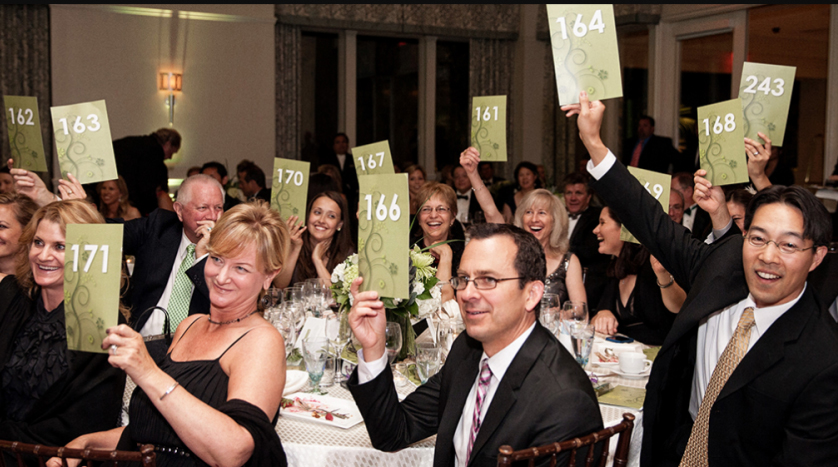I’ve sat with numerous MGOs who have been beaten down by their bosses because they haven’t brought in new major donors. Here are some of the things bad non-profit managers are saying to their MGOs:
“Why don’t you go to the art museum and write down all the names that are on the walls honoring donors and start calling them?”
“Get out the phone book and start looking at donors who live in a wealthy area of town and start calling.”
“I want you to go to this other organization’s gala, and you can start talking to donors at your table and see if they are interested in our organization.”
Yes, as ridiculous as those quotes sound, Richard and I have heard them all and more. I think what’s happening is that non-profit leaders are feeling the pressure to get more money in, and they don’t really know that major gift fundraising is about establishing and nurturing relationships. What they do then is put all kinds of pressure on MGOs to find and recruit new major gift donors.
Do you realize how incredibly hard it is to get a gift from a cold call? Nearly impossible.
I was recently talking to a woman at a major university on the east coast. She was in tears as she told me how she was given a list of 200 prospects and a certain dollar goal to meet for the year; if she didn’t meet it, she would probably be fired.
“I didn’t realize this is what major gift fundraising was,” she said. I reassured her that it wasn’t, and that what she was really doing was qualifying donors, not doing major gift cultivation and stewardship. I told her that expecting donors (even alumni) to make a significant gift after getting a cold call from her was about zero.
Yet, who is her boss? What is that person thinking?
But the pressure continues. How do you bring in more major donors who can make a significant impact on your organization? Here are some ideas for you:
- Start with scouring your own database. Before you start chasing that millionaire who has never given to you, I know for a fact that you have major donors in your database. Start doing wealth indicator overlays and doing some of your own hard research. We’ve written about how to do this research. So check it out. Here at Veritus Group the only time we’d advocate going out to find major gift prospects is when you’ve absolutely discovered all of them in your own database, and you have the labor to go out and find new major donors.
- Make Board Connections. I just read the other day in the Chronicle of Philanthropy that CEOs of non-profits are disappointed because their boards are not doing more to raise money. Wow. Big shocker. I don’t think I’ve ever had a conversation with a CEO who said they thought their board was doing a great job helping to raise money. Yet they keep bringing on board members who don’t want to raise money. Your board has to help bring people within their sphere of influence to “check you out.” Notice I didn’t say they have to strong-arm people into making gifts. That might be nice for a one-time gift, but ultimately you want a lifetime relationship. What your board members need to do is bring folks to you that may be interested in the organization. Then, it’s your job to inspire them, break their heart and ultimately win their trust in order for them to invest in you.
- Donors inviting potential donors. Just like board members do, you have committed major donors who have influence. Recruit those donors to invite their friends to see what you are all about. Again, not to strong-arm them into giving, but to introduce them to your organization. It’s then your job to take it from there.
- New Donor Wealth Overlays. For medium to large organizations that have a fairly robust direct-response new donor acquisition strategy, I would recommend creating a system of screening all donors who are new to the organization. Now, I want to caution you. Just because you bring in a new donor at $25 and they have a high wealth indicator doesn’t mean you can turn them immediately into a major donor. There must be a solid qualification strategy in place that allows you to screen and discover if this donor not only has the capacity but also the propensity to give to your mission. Even then, it’s not a guarantee they will go from a $25 gift to a $10,000 or $100,000 gift. I will say, however, that some organizations we work with have had some success with this strategy, but only because they have a very stringent qualification process in place. This process includes the wealth overlay, a researcher actually looking at each donor, then a phone call to talk with the potential donor. Even after that, it requires a face-to-face visit to finally determine if the donor really is a “major” donor.
Expecting to find new major donors for your organization is no small task. And many non-profit leaders make the mistake of going after prospects before really knowing who is in their own database. I mean, think about it. These are people that have already raised their hands and said “Yes!” to your mission. For goodness’ sake, start there.
But once you have done all that and you have the labor to pursue it, use the strategies above to start the process of bringing new potential major donors to the table. Then it’s your job to win their hearts and trust.
Jeff




0 Comments